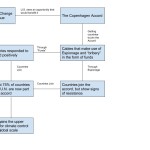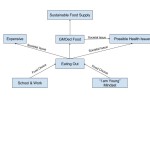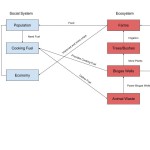Many of the natural disasters that are on the maps can occur in my hometown (Northeast Pennsylvania). They include tropical cyclones, hailstorms, winter storms, tornados, and wildfires. One of the metrics that I was surprised about was the tornado zone that my area is in. I would have to disagree with the zone that my hometown is in (it’s hard to tell, but it looks like zone 2 or 3). Although tornados have happened in Pennsylvania, they are extremely rare due to the climate conditions and the type of terrain that most of Pennsylvania consists of, which is hilly and mountainous. For the tornados that have occurred in Pennsylvania, they are typically very weak and do not last long. The rest of the metrics on the maps I feel are pretty accurate.
The natural disaster I selected from the RSOE and EDIS was a wildfire that was ignited around Ruidoso in New Mexico early this morning. My hometown could experience a wildfire. Fires have actually broken out in a nearby town on top of a mountain in the past. The risk of this disaster is somewhat high, since much of the population lives in the forest where plenty of fuel for a fire is available. Although the vulnerability isn’t quite as high as somewhere like New Mexico, where the climate is very dry, and any vegetation is likely to be very dry either naturally or due to the climate. That being said, in the summer, we have had times where droughts have been declared, and fire watches were put in place. The scale of the event in New Mexico as determined by the RSOE EDIS is small. If this were to occur in my hometown, I would probably classify it as a medium scale. The reason for this is the amount of vegetation that is available for a fire to consume. The area in New Mexico has some vegetation to consume, but not nearly as much as what my area has. As for the severity of the disaster if it occurred in my hometown, I would say the people that actually live in the town and not around it are less vulnerable to a wildfire. Inside the town is all developed, and little vegetation is present due to the fact that buildings are in place. In order to lower the vulnerability of a wildfire occurring, there is not much you can do. You can raise awareness of the situation, which may help prevent a fire from occurring from say someone throwing a cigarette butt out of their car, but other than that, there isn’t much one can do from a practical standpoint to prevent such a disaster. You can add to the fire department, but that doesn’t prevent a fire, it would only help combat one that has already broken out.
Using the internet, I was able to find some information about natural disasters for Scranton Pennsylvania (a larger city near my hometown). The chances of an earthquake occurring in Scranton is very low. The tornado level is higher than I would have expected again, but is still about half the national average. Some other natural disasters which are notably high are hail storms, and flooding. There have been few times where I can recall a significant hail storm coming through the area, but flooding is certainly one of the most common natural disasters we face in northeast Pennsylvania. The last major flood occurred in 2011. Many areas near Scranton and including Scranton were impacted severely by this flooding.
Source: “Scranton, PA Natural Disasters and Weather Extremes.” USA.com. World Media Group, LLC. Web. 29 Mar. 2016. <http://www.usa.com/scranton-pa-natural-disasters-extremes.htm>.
I think the best way to reduce the vulnerability of a natural disaster in any location is to be prepared before it occurs. As a former Boy Scout, and Eagle Scout, one of the required merit badges is Emergency Preparedness. While working towards this badge, you learn that the best way to deal with a disaster is to be prepared. Being prepared for a disaster can include having adequate supplies stocked and having a plan in place. I feel that there is no single person that is best suited for being prepared, as it is a group effort. The next best way to reduce the vulnerability is to build up the resilience of the community. Depending on the disaster, many things can be done to prevent a disaster, such as establishing levees to prevent flooding. At a smaller level, I mentioned in previous module about culverts in my community that help drain water away. Maintaining these culverts is up to the house owners, and without proper upkeep, they can eventually lead to water overflowing out of them.




